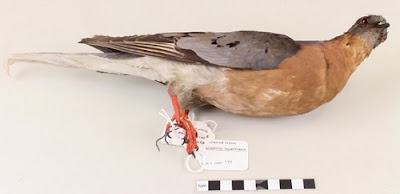Towards the end of my internship here
at the Leeds Discovery Centre, I have been focusing on the numerous
boxes of books that form a substantial part of the Henry Collection
of ‘sweepiana’ (anything and everything to do with chimney
sweeps).
The collector, Dr. Henry was an avid and extremely thorough
(some might say, obsessed) collector, with many books containing just
a single reference to chimney sweeps or sweeping. The majority of
the collection I have been documenting spans the 18th and 19th
centuries and it is fascinating to delve into these books and
magazines to catch a glimpse of the different facets of English
society as it was back then. Many of the publications include
beautifully crafted engravings, some of which (in the more expensive
editions) were then painstakingly coloured by hand using
watercolours.
One of the books I came across early on
in my internship, was a volume entitled Mrs. Montagu 'Queen of
the Blues'. This book lacked the usual handwritten note by
Dr. Henry on the inside, indicating a reference to sweeps contained
in the volume, and this omission left me wondering why it was
included in the collection. A little research unearthed a story that
started in York, ended in London, with wealth, philanthropy, personal
disaster and rumours of a kidnapping worthy of any Hollywood drama,
sandwiched between.
But where does the link
between Mrs. Montagu and chimney sweeps come in? Right where the
rumours of kidnapping abound... According to several (all slightly
differing) accounts, a young nephew of Elizabeth Montagu’s
disappeared one day. Sometime later, she hired a chimney sweep to
come to her house, and who did the poor, dirty urchin whose job it
was to crawl up that narrow, sooty tunnel turn out to be? None other
than her own nephew who had been kidnapped and forced into labour!
How accurate this story is, may never be known, but what is certain,
is that Mrs. Montagu provided a May Day breakfast feast for chimney
sweeps every year until her death in 1800.
I can imagine that May Day morning
scene; a group of young boys, scrubbed as clean as they have been all
year, sitting in Elizabeth Montagu’s beautiful garden, stuffing
down as much food as their bellies could hold before heading out
excitedly to take their part in the May Day celebrations – the only
day’s holiday for the sweeps in the whole year.
Elizabeth
Montagu undoubtedly played an important part in changing some of the
attitudes of society at that time, showing compassion to those less
fortunate than herself, and raising awareness in the upper class
circles she moved in, of the plight of child chimney sweepers.
By Izzy Bartley, Social History Intern.






